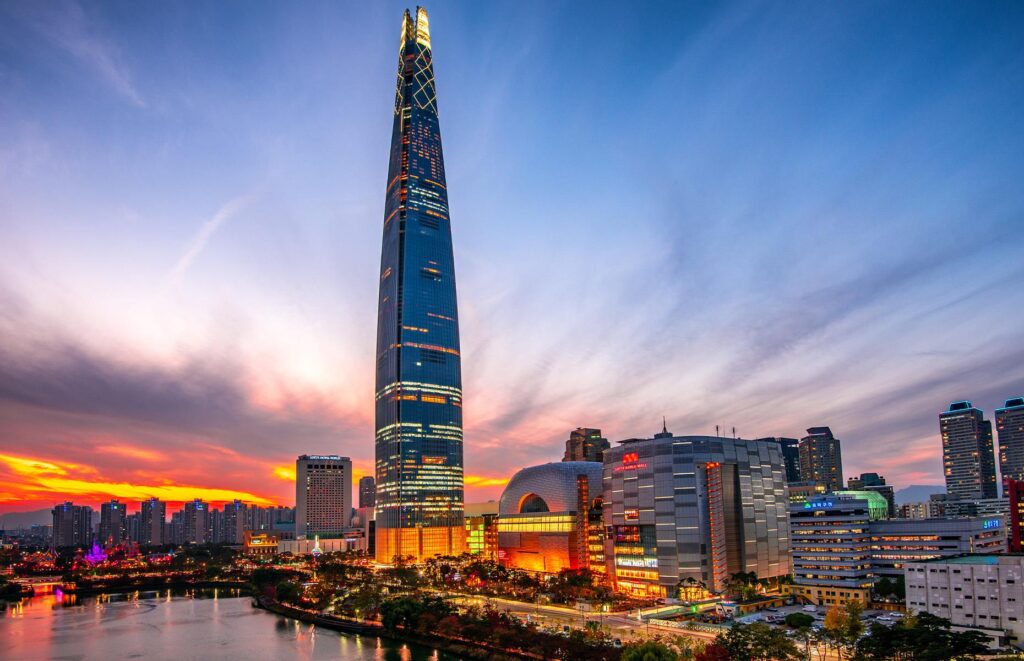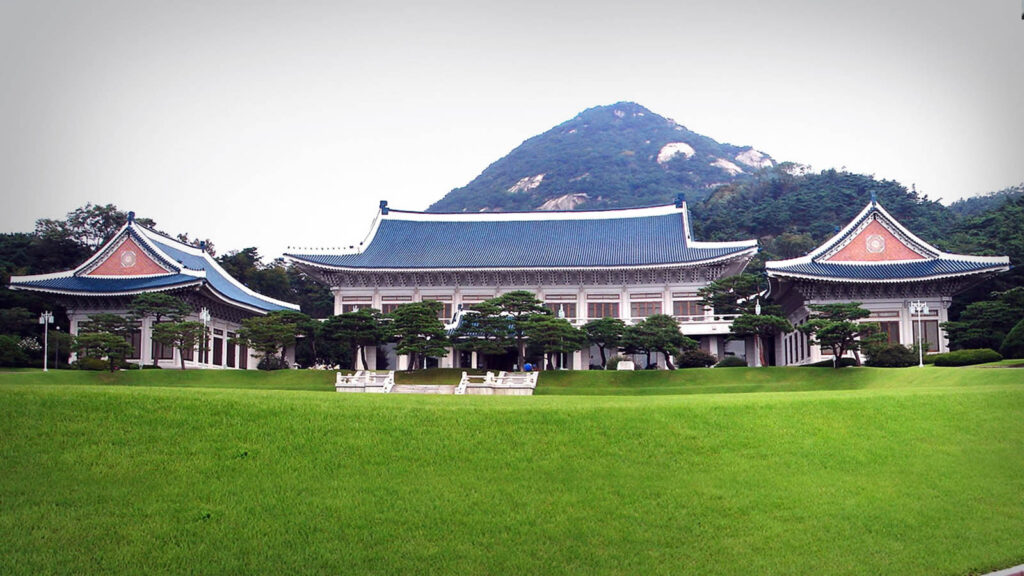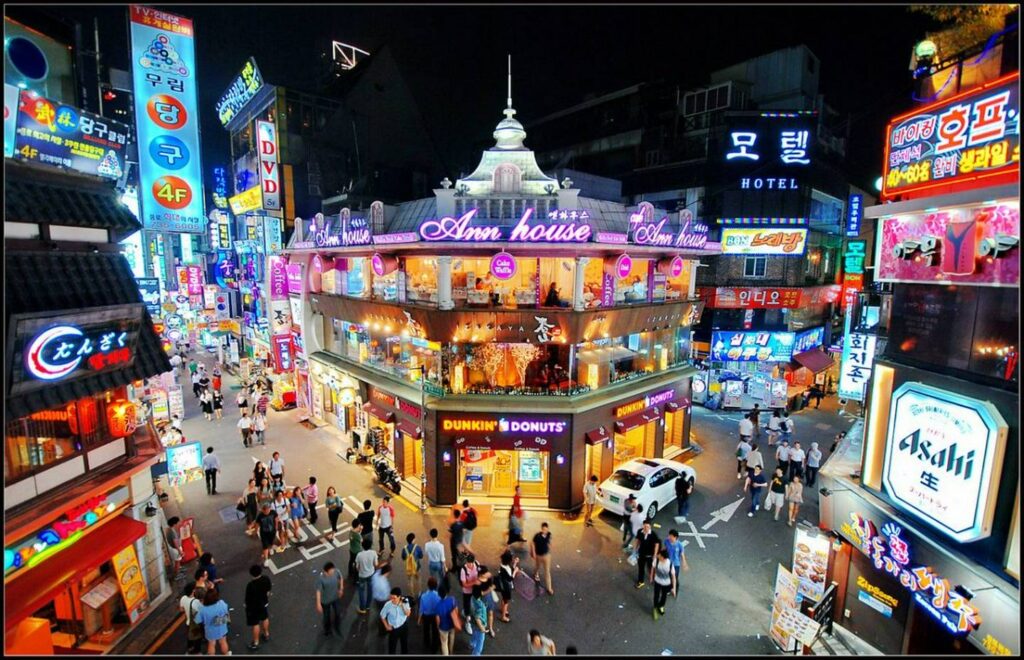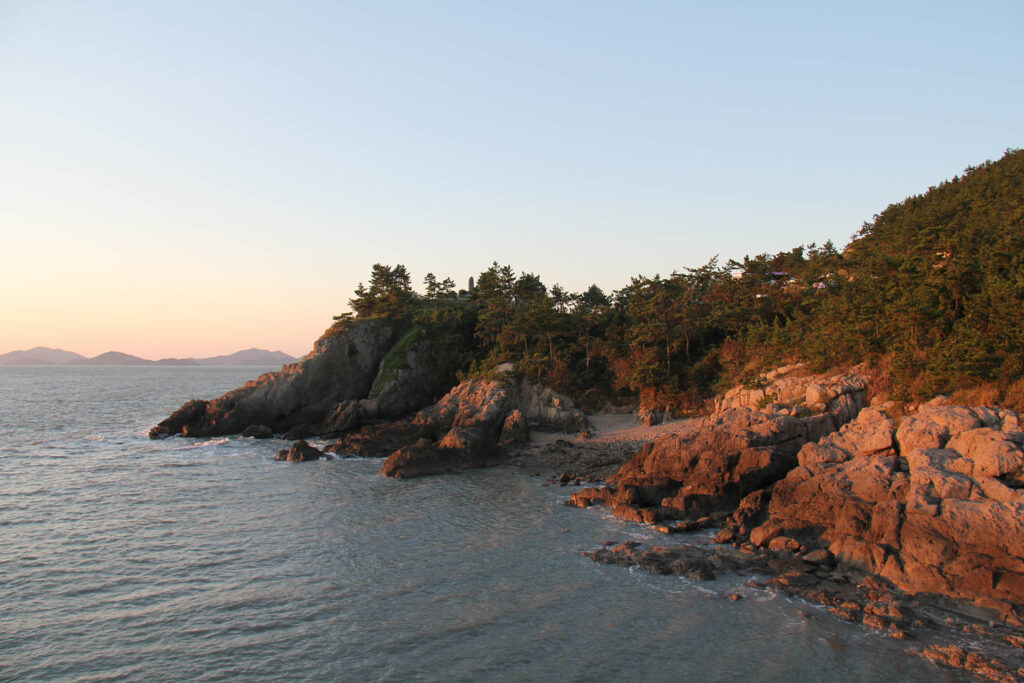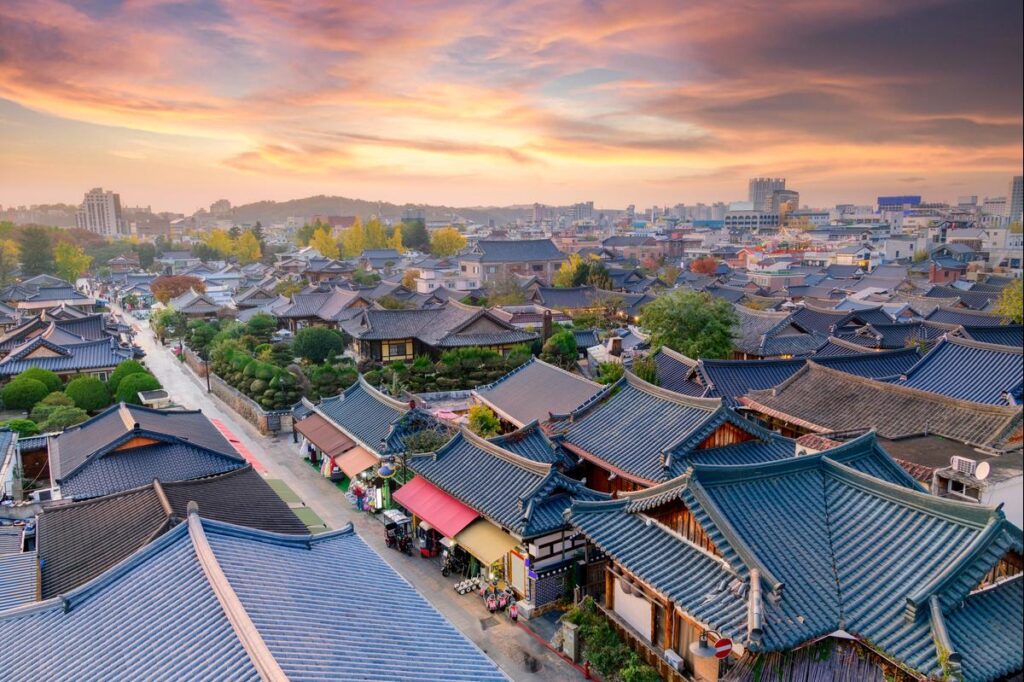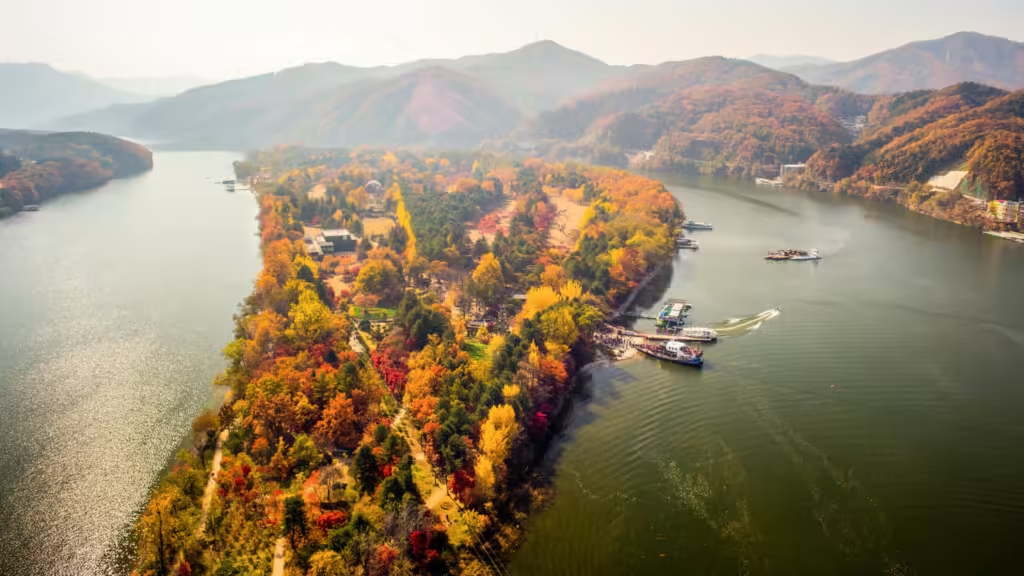Introducing The Gyeongbokgung Palace
Nestled in the heart of Seoul, the vibrant capital of South Korea, lies Gyeongbokgung Palace – a breathtaking architectural masterpiece that serves as a poignant reminder of the nation’s rich cultural heritage. With its imposing gates, meticulously designed buildings, and serene gardens, this UNESCO World Heritage Site beckons visitors to embark on a journey through time, immersing themselves in the grandeur of the Joseon Dynasty’s illustrious reign.
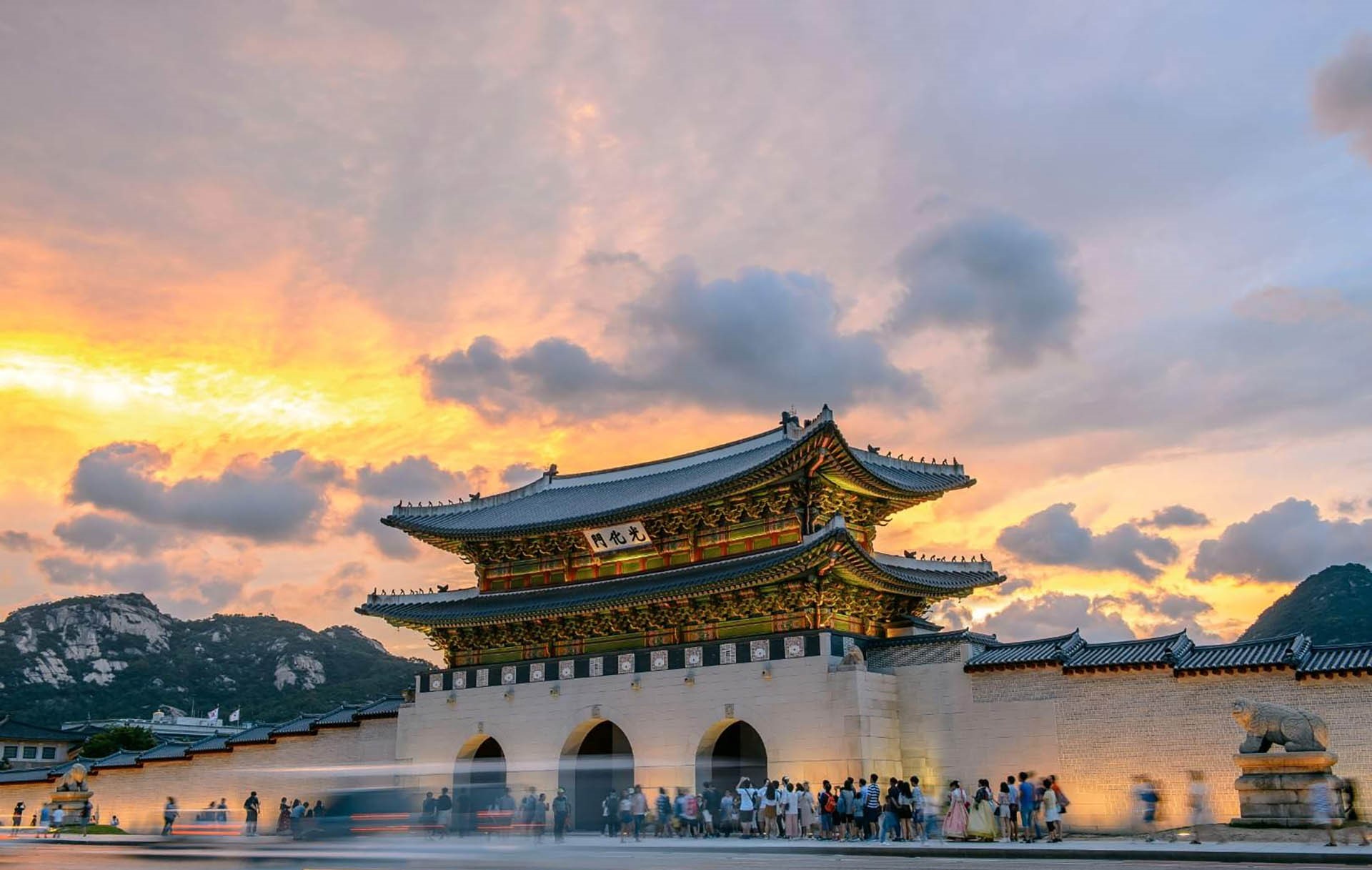
A Brief History of Gyeongbokgung Palace
Origins and Construction
Gyeongbokgung Palace, also known as the “Palace Greatly Blessed by Heaven,” traces its origins back to the late 14th century when the Joseon Dynasty established its capital in what is now modern-day Seoul. The construction of the palace complex began in 1395 under the reign of King Taejo, the founder of the Joseon Dynasty, and continued for several decades, with successive kings adding their own unique touches and expansions.
Destruction and Reconstruction
Throughout its storied history, Gyeongbokgung Palace has endured times of both splendor and adversity. In the late 16th century, during the Japanese invasions of Korea, much of the palace was reduced to ashes, leaving behind a haunting scene of desolation. It wasn’t until the early 17th century that restoration efforts began under the leadership of King Gwanghaegun, breathing new life into the once-magnificent complex.
Continued Expansion and Renovation
Over the centuries, Gyeongbokgung Palace witnessed numerous renovations and expansions, reflecting the changing tastes and priorities of each ruling monarch. From the grand halls and intricately designed living quarters to the sprawling gardens and pavilions, every aspect of the palace was meticulously crafted to showcase the pinnacle of Korean architecture and artistic expression.
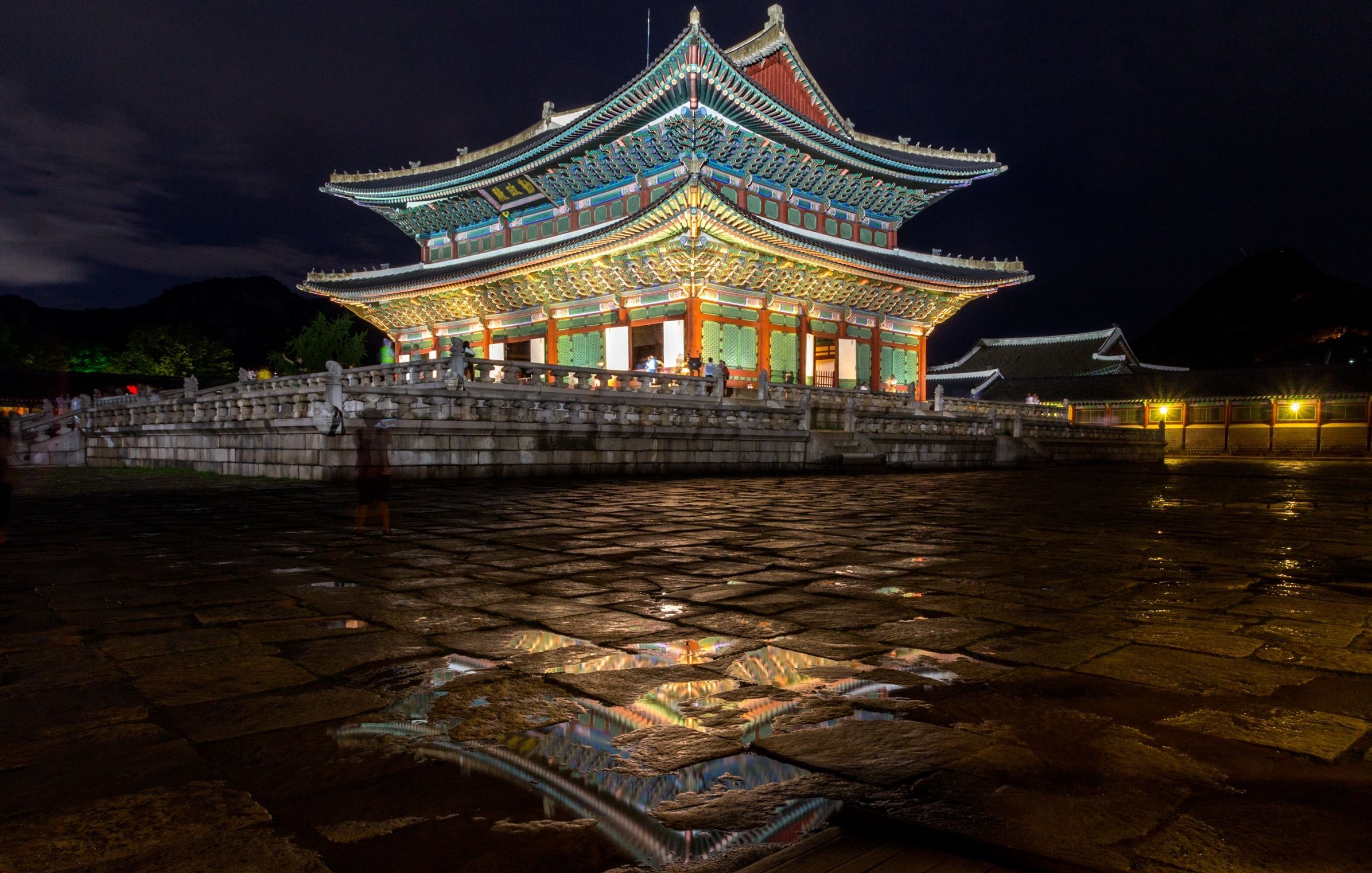
Architectural Marvels and Cultural Treasures
The Magnificent Gates
As visitors approach Gyeongbokgung Palace, they are greeted by the awe-inspiring sight of the Gwanghwamun Gate, the main entrance to the complex. This massive structure, adorned with intricate carvings and vibrant colors, immediately transports onlookers to a time of regal splendor. Beyond the gates, a series of courtyards and buildings unfold, each with its own unique architectural style and significance.
The Throne Hall and Royal Residences
At the heart of Gyeongbokgung Palace lies the Geunjeongjeon, the throne hall where kings once held court and received ambassadors from foreign lands. This imposing structure, with its intricately painted ceilings and ornate decorations, is a testament to the power and grandeur of the Joseon Dynasty. Nearby, the Geoncheonggung and Jibokgung served as residences for the king and queen, respectively, offering a glimpse into the opulent lifestyles of the royal family.
Gardens and Pavilions
No visit to Gyeongbokgung Palace would be complete without exploring the serene gardens and pavilions that dot the palace grounds. The Amisan Garden, with its meticulously manicured landscapes and tranquil ponds, was once a favorite retreat for the royal family and their guests. The Hyangwonjeong Pavilion, perched atop a picturesque hill, offers breathtaking views of the palace complex and the surrounding cityscape.

Preserving Cultural Heritage
Ongoing Restoration and Conservation Efforts
Gyeongbokgung Palace is not merely a relic of the past but a living, breathing embodiment of Korea’s rich cultural heritage. Over the years, the South Korean government, along with various heritage organizations, has undertaken extensive restoration and conservation efforts to preserve the palace’s architectural and cultural treasures.
From painstakingly repairing damaged buildings and artifacts to employing traditional construction techniques, these efforts have ensured that future generations can continue to marvel at the grandeur of Gyeongbokgung Palace.
Educational Programs and Exhibitions
In addition to its physical preservation, Gyeongbokgung Palace plays a crucial role in educating visitors about the cultural significance of the Joseon Dynasty. Through a range of interactive exhibits, guided tours, and educational programs, visitors can gain a deeper appreciation for the intricate customs, traditions, and artistry that defined this golden era in Korean history.
Cultural Events and Performances
To truly experience the vibrancy of Gyeongbokgung Palace, visitors can immerse themselves in the various cultural events and performances that take place within its walls. From traditional music and dance performances to reenactments of royal ceremonies, these events offer a unique opportunity to step back in time and witness the cultural richness of the Joseon era come to life.
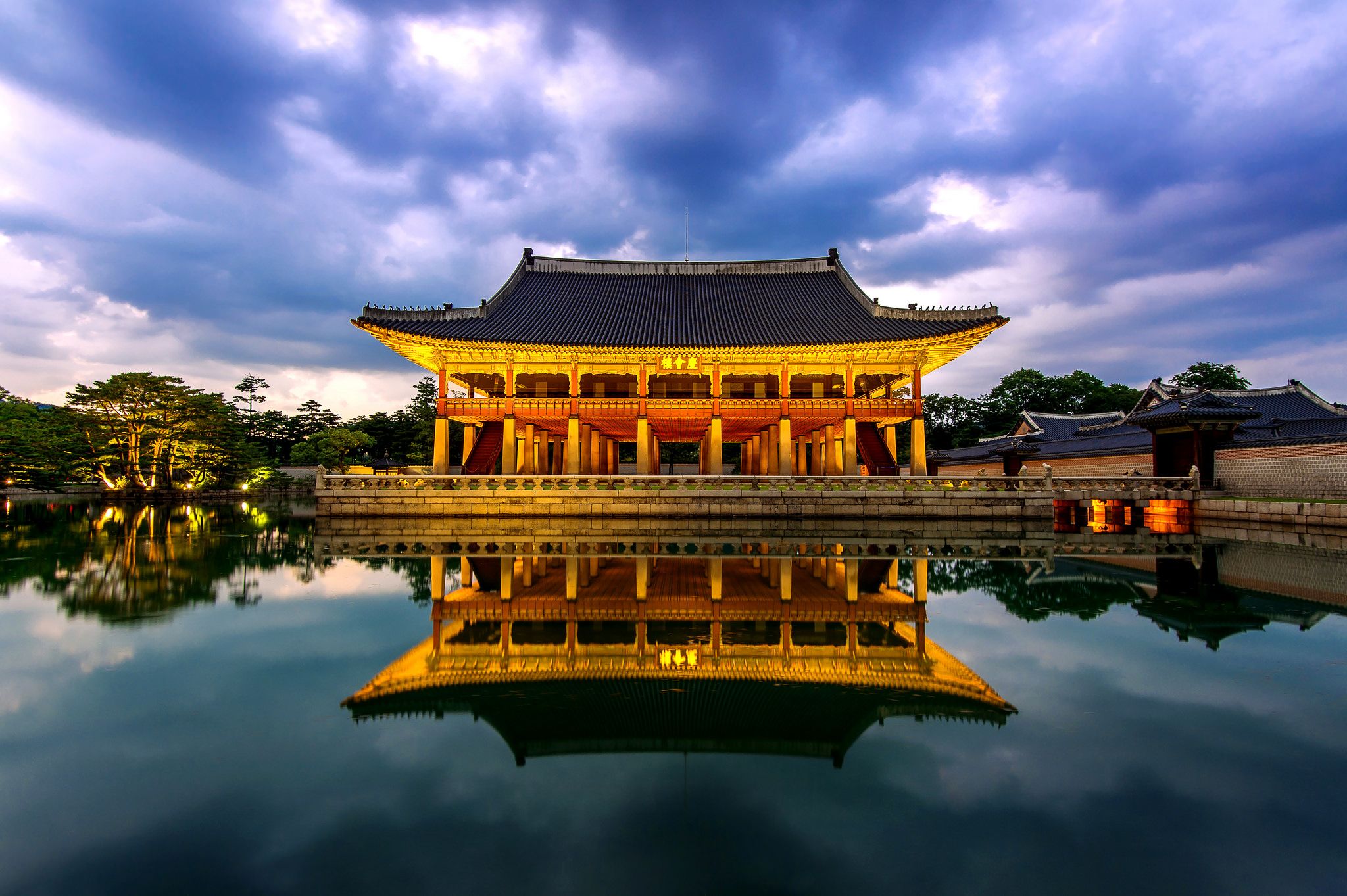
A Captivating Destination for Travelers
Exploring the Surrounding Neighborhood
While Gyeongbokgung Palace is undoubtedly the crown jewel of the area, the surrounding neighborhood offers a wealth of additional attractions and experiences for travelers to enjoy. The nearby Bukchon Hanok Village, with its narrow alleys and traditional Korean hanok houses, provides a glimpse into the everyday lives of commoners during the Joseon Dynasty.
Culinary Delights and Shopping Opportunities
No visit to Seoul would be complete without indulging in the city’s vibrant culinary scene. The streets surrounding Gyeongbokgung Palace are home to a myriad of restaurants and food stalls, offering visitors the chance to savor authentic Korean cuisine, from savory bibimbap to the ever-popular Korean barbecue.
For those seeking souvenirs or unique gifts, the nearby Insadong district is a shopper’s paradise, featuring an array of traditional crafts, antiques, and artisanal products.
Accommodations and Travel Tips
To fully immerse themselves in the rich cultural experience that Gyeongbokgung Palace and its surroundings offer, travelers may choose to stay in one of the many traditional hanok guesthouses or modern hotels in the area. These accommodations not only provide convenient access to the palace but also offer a unique opportunity to experience the blend of traditional and contemporary Korean culture.
When planning a visit to Gyeongbokgung Palace, it’s advisable to allot ample time to explore the vast complex and its numerous attractions. Comfortable walking shoes and appropriate attire are recommended, as visitors will be doing a considerable amount of walking and may encounter traditional dress requirements in certain areas.

Conclusion
Gyeongbokgung Palace stands as a magnificent testament to Korea’s rich cultural heritage, offering visitors a captivating journey through time. From its awe-inspiring architectural marvels and serene gardens to the vibrant cultural events and educational programs, this UNESCO World Heritage Site is a true gem that should not be missed. Whether you’re a history buff, an architecture enthusiast, or simply seeking a deeper understanding of Korean culture, Gyeongbokgung Palace promises an unforgettable experience that will leave a lasting impression on your soul.



